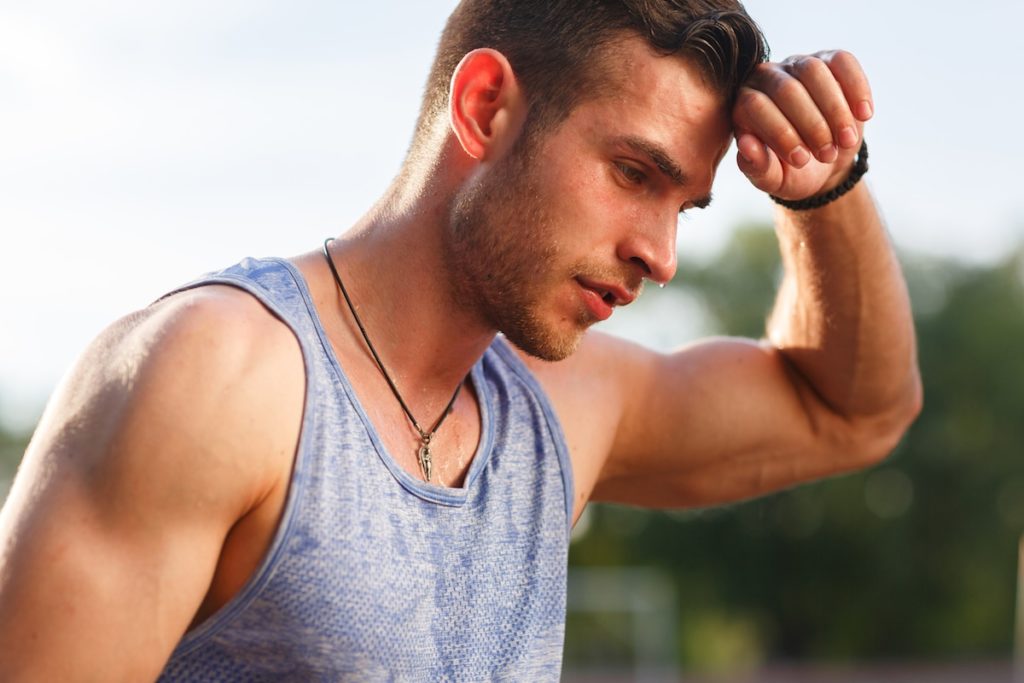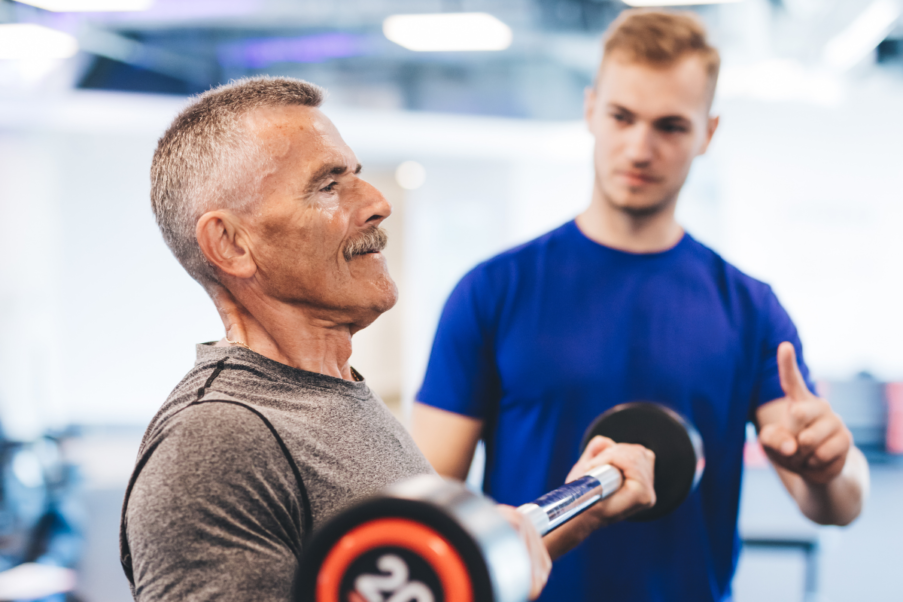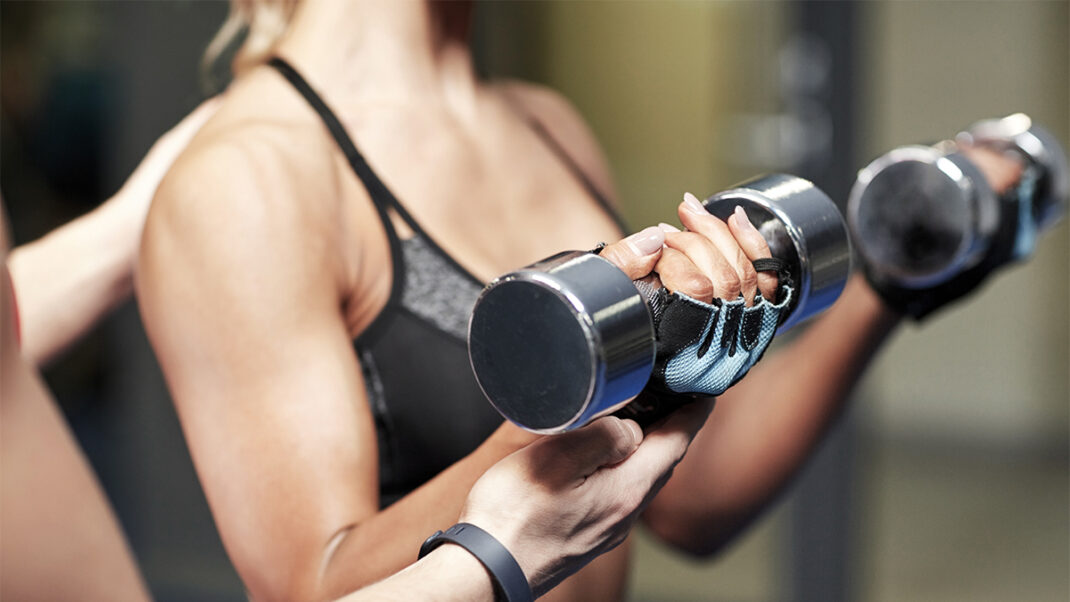Getting Better at Recovery
Research supports many of today's popular recovery strategies, while pointing to new discoveries for improving individual and team sports in the future.

A growing body of research is shedding more light on the importance of resting after exercise—providing vital clues on measuring and enhancing the recovery process. These insights are welcome news to personal trainers and coaches who see the consequences of overtraining and inadequate recovery every day.
This column discusses some of the latest research on assessing and managing recovery and advises on tactics that may help your clients recover from exercise.
Resting/Recovering: The Basics
Fatigue and recovery are integral components of exercise. Fatigue can be defined as a reversible decline in one or more biological systems. Traditionally, fatigue is considered either central (emanating from the brain and nervous system) or peripheral (happening at the neuromuscular junction and in the exercising muscle) (Sands et al. 2016).
Summarizing many definitions, Sands and colleagues describe recovery as a physiological repair process that overcomes the effects of fatigue and re-establishes the exerciser’s ability to meet and/or exceed a previous performance. Recovery includes the processes of growth and physiological adaptation.
Using Blood Biomarkers to Assess Recovery
In years past, recovery research measured strength, peak power output and athletes’ subjective estimates of how they felt after a workout, but all those measures were inherently limited because they did not assess the biological forces at work in a recovering exerciser. Lately, recovery research has taken an exciting new turn—quantifying key biomarkers of inflammation and muscle damage in the blood along a “time course” after exercise.
Blood biomarkers provide the most accurate indications of the body’s recovery state after activity ends (Bessa et al. 2016) . The challenge is that scientists are only just beginning to identify the time course from its beginning (when biomarkers first appear) through the end of the course (when recovery has cleared those biomarkers from the blood). Bessa and colleagues were one of the first research teams to explore this time-course method of assessing recovery.
The researchers worked with 19 top-level amateur male cyclists (aged 28 ± 2.5 years; 179 ± 6.4 pounds; VO2peak = 61.2 ± 1.7 ml O2/kg/min, which is a superior level) who performed 6 sets of deep squats at 85% of their one-repetition maximum, alternating with 6 sets of bench presses performed at 85% of their 1-RM. Immediately after the strength workout, they cycled for 1 hour at 85% of their VO2peak. The researchers collected blood biomarker samples immediately before and then 3, 6, 12, 48 and 72 hours after the exercise protocol.
This pioneering descriptive study measured biomarkers of muscle damage (creatine kinase and lactate dehydrogenase), inflammation (leukocytes, lymphocytes and neutrophils) and oxidative stress (proinflammatory and anti-inflammatory cytokines). The results point to fascinating possibilities for athletic teams: When future research identifies optimum protocols, teams will be able to easily assess athletes’ exercise intensity and recovery status over the course of a season. Eventually, assessment protocols could be developed to allow athletes in all types of aerobic, anaerobic and combined (aerobic–anaerobic) sports to track their recovery biomarkers.
Practical Ways to Improve Recovery
A good night’s sleep is one of the best paths to effective recovery, but researchers say almost anything that enhances circulation should help (Sands et al. 2016). Indeed, three of the most popular recovery-improvement methods address circulation: Compression garments, self-
myofascial release and cold-water immersion. Here’s a look at how well they work:
Compression Garments
Compression garments (CGs) apply pressure to parts of the lower and upper body, with options including short sleeves, sleeveless, full-cover long sleeves, shorts, long shorts and full-length pants. Sakadjian (2015) reports that wearing CGs during and after a workout (for 12–48 hours for best results) has been associated with small to moderate improvements in muscle soreness, muscle swelling, proprioception, sensory feedback, blood flow in exercising muscles and perceived exertion.
Research has not determined an optimal level of compression. The industry standard for estimating compression is measured in millimeters of mercury (mm Hg), and pressure is ranked from low (15 mm Hg) to mild (15–21 mm Hg) to moderate (25–32 mm Hg). The pressure in a medical-grade compression garment (for specific clinical conditions) is usually higher than 30 mm Hg. Sakadjian observes that CGs may provide minor physiological gains in performance and recovery, and there is no evidence that CGs are detrimental.
Self-Myofascial Release (Foam Rolling)
Self-myofascial release (SMR), using a foam roller or roller massager, has become a popular way to enhance mobility, flexibility and recovery. Although the literature on the effects and reliability of SMR is still emerging, evidence suggests it may be an effective method for enhancing joint range of motion without harming exercise performance (Cheatham et al. 2015.
Cheatham et al. also reviewed research hypothesizing that SMR improves recovery by reducing swelling in the target areas, enhancing blood flow to the exercising muscle and removing metabolic byproducts of exercise. The researchers caution that studies provide no consensus on optimal SMR techniques.
Cold-Water Immersion and Cryotherapy
Cold-water immersion is an easy, affordable and common strategy for enhancing recovery. In their review article, White and Wells (2013) say that reducing tissue temperature alters blood flow, cell swelling, metabolic reactions and neural conductance speed during recovery from high-intensity exercise. The researchers suggest these physiological changes may likely improve recovery from exercise, but they note that the long-term effects of chronic cold-water immersion have not been spelled out.
White and Wells also suggest trying other forms of cryotherapy (extreme cold), including ice or cold gel packs, ice massage, or any other local or general application of cold. An optimal target temperature for cold-water immersion or other cryotherapies has yet to be identified.
Getting It Together With Recovery
Recovery research is moving in fascinating directions—especially with the study of blood biomarkers for muscle damage and inflammation—though practical applications lie in the future. When it comes to day-to-day exercises, however, trainers and coaches may find that all of the recovery tactics discussed above can help their clients recover and potentially avert overtraining injuries. Given that research doesn’t generally point to a “best dose” for most of these techniques, personal trainers may want to introduce them progressively, just as they do with their exercise programs.
Not getting adequate sleep is one of the most prominent problems athletes connect with feeling tired or fatigued. The general guidelines recommend 7–9 hours of sleep every 24 hours to ensure adequate physiological and psychological recovery after training, with 80%–90% of that at night (Bird 2013).
Bird adds that adequate sleep is particularly important for athletes and exercisers who are injured, traveling, or in heavy phases of training or competition. Sufficient sleep improves not only cognitive and motor performance but also reaction times.
How to Sleep better At Night
- Increase sleep to 7–9 hours every 24 hours. Adolescents in heavy training may need up to 10 hours of sleep per night.
- Go to bed at night and wake up around the same times each day.
- Naps are fine, but limit them to 30 minutes and avoid late afternoons.
- If you can’t get to sleep in 15 minutes, get up and do a mundane task.
- Avoid alcohol and coffee in the hours before bed.
- Avoid watching TV, eating, working or reading in bed.
- Keep the room cool for sleeping.
- Use relaxation techniques such as positive suggestions and creative visualizations to ensure a clear mind and calm state at bedtime.
- Allow breathing to become slower and deeper to reduce anxiety before sleeping.
Source: Bird 2013.
References
Bessa, A.L., et al. 2016. Exercise intensity and recovery: Biomarkers of injury, inflammation, and oxidative stress. Journal of Strength and Conditioning Research, 30 (2), 311–19.
Bird, S.P. 2013. Sleep, recovery, and athletic performance: A brief review and recommendations. Strength and Conditioning Journal, 35 (5), 43–47.
Cheatham, S.W, et al. 2015. The effects of self-myofascial release using a foam roll or roller massager on joint range of motion, muscle recovery, and performance: A systematic review. International Journal of Sports Physical Therapy, 10 (6), 827–38.
Sakadjian, A. 2015. Effects of compression garments on performance and recovery: A review of the literature. Journal of Australian Strength and Conditioning, 23 (3), 60–65.
Sands, W.A, et al. 2016. Recovery-adaptation. Strength and Conditioning Journal, 38 (6), 10–26.
White, G.E., & Wells, G.D. 2013. Cold-water immersion and other forms of cryotherapy: Physiological changes potentially affecting recovery from high-intensity exercise. Extreme Physiology & Medicine, 2 (1), 26.
Len Kravitz, PhD
Len Kravitz, PhD is a professor and program coordinator of exercise science at the University of New Mexico where he recently received the Presidential Award of Distinction and the Outstanding Teacher of the Year award. In addition to being a 2016 inductee into the National Fitness Hall of Fame, Dr. Kravitz was awarded the Fitness Educator of the Year by the American Council on Exercise. Just recently, ACSM honored him with writing the 'Paper of the Year' for the ACSM Health and Fitness Journal.






